
Another Oddball In The Mushroom Family
If you go traipsing around your local wooded area after a decent rain in the summertime and early fall, you are almost certain to see some variation of the genus Lycoperdon - with perlatum, or The Common Puffball, being the most likely culprit in North America.
These very pretty little mushrooms grow on the ground and on very decayed pieces of wood. I have actually only ever encountered them on the latter medium.
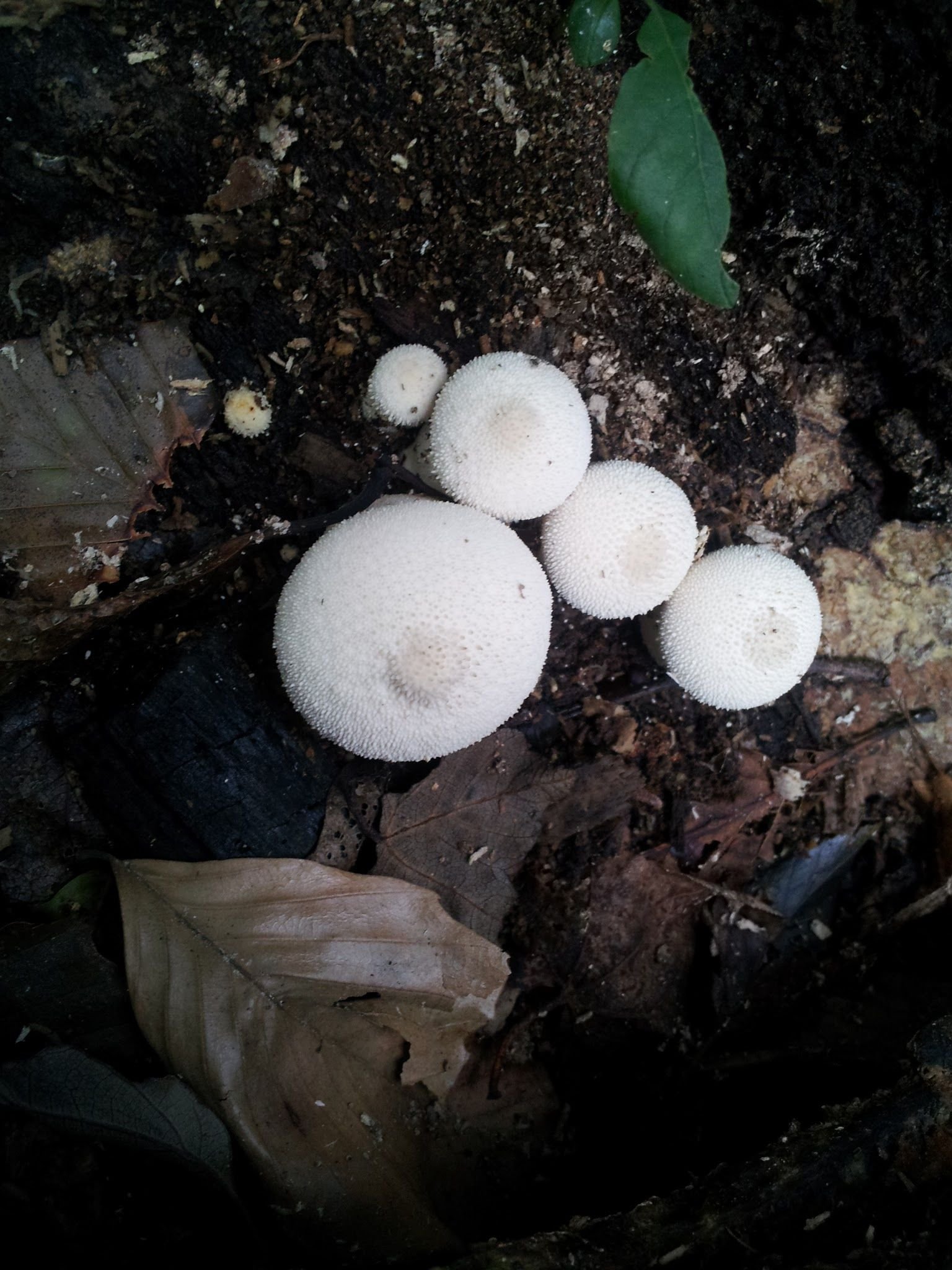
They tend to grow gregariously, in small to large disordered groups.
When they're young, they have many hundreds of tiny spikes all over their surface which makes them look like little jewels.
But as they age, something weird starts to happen.
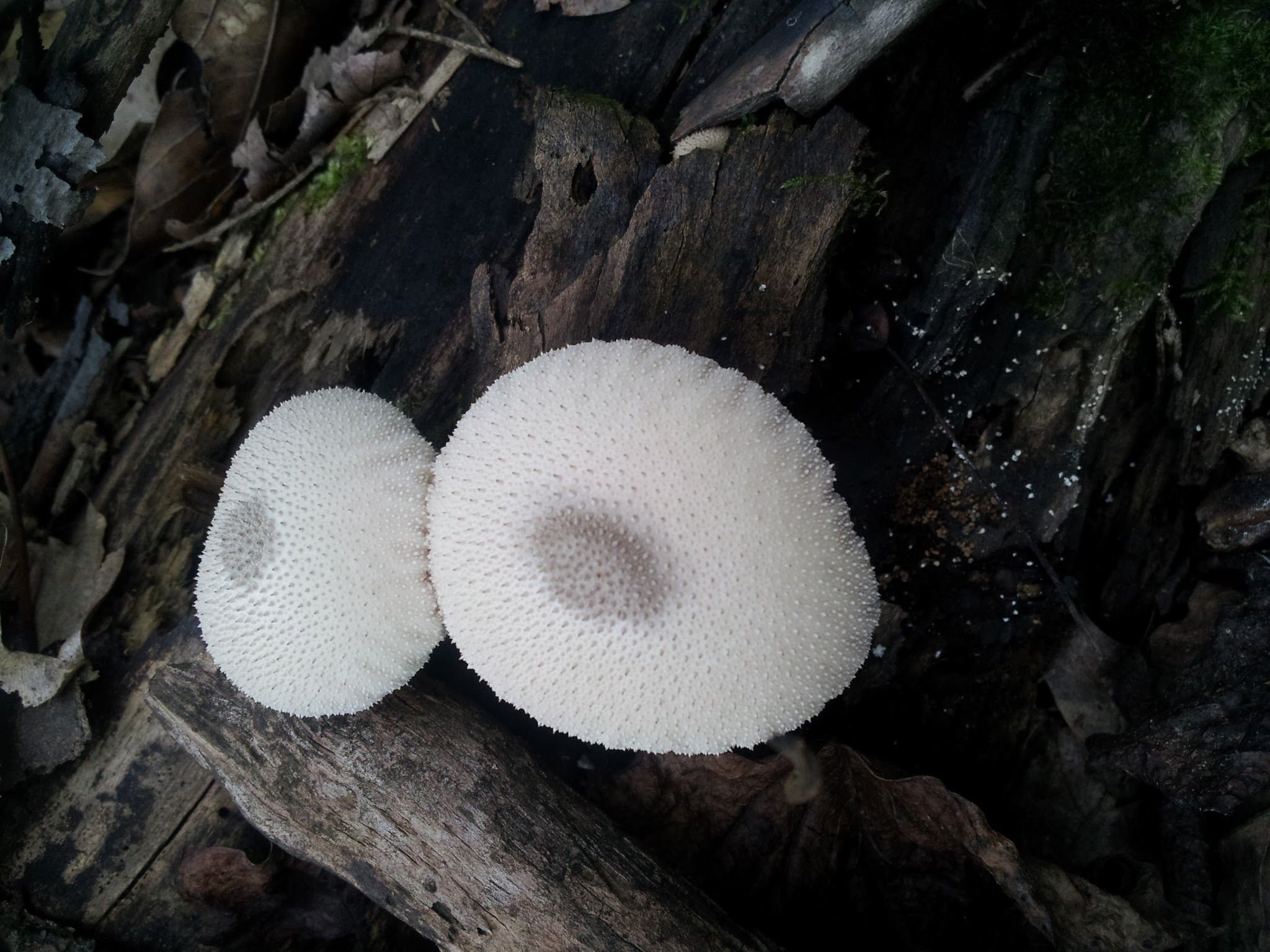
First, you start to see that discoloration at the center of the mushroom.
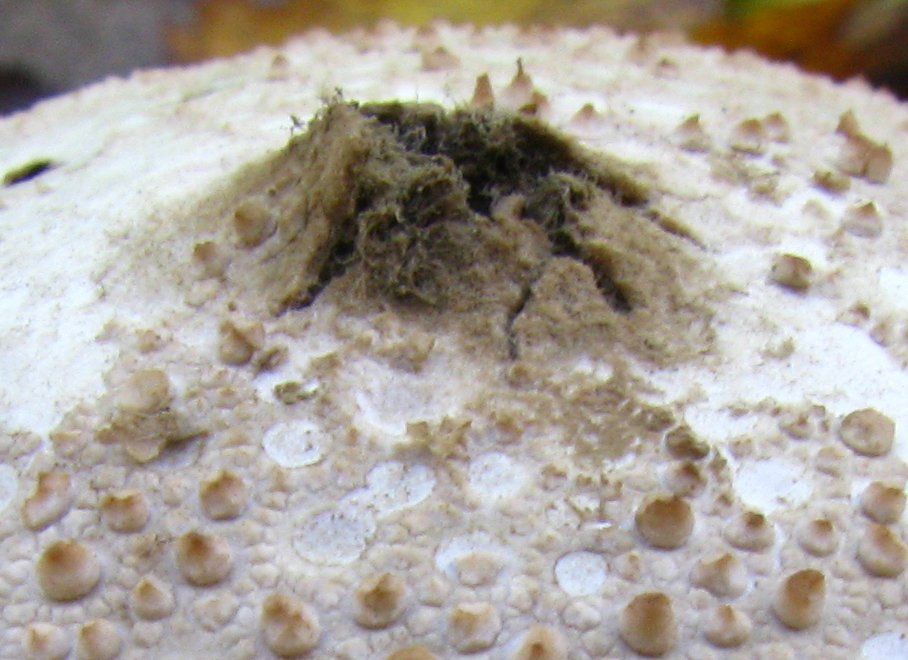
A day or so later, the discoloration turns into this.
Unlike many mushrooms, the whole flesh of Puffballs is spore material. This internal spore-flesh is called, Gleba, and, as disgusting as that sounds, as long as you get to it early, puffball gleba is actually yummy.
At this point in its maturation, if you give the mushroom a good press with a finger, you can cause it to shoot spores into the air, as this youtube video posted by user Alan Esner demonstrates.
By the end of its life cycle the puffball is deteriorated beyond recognition
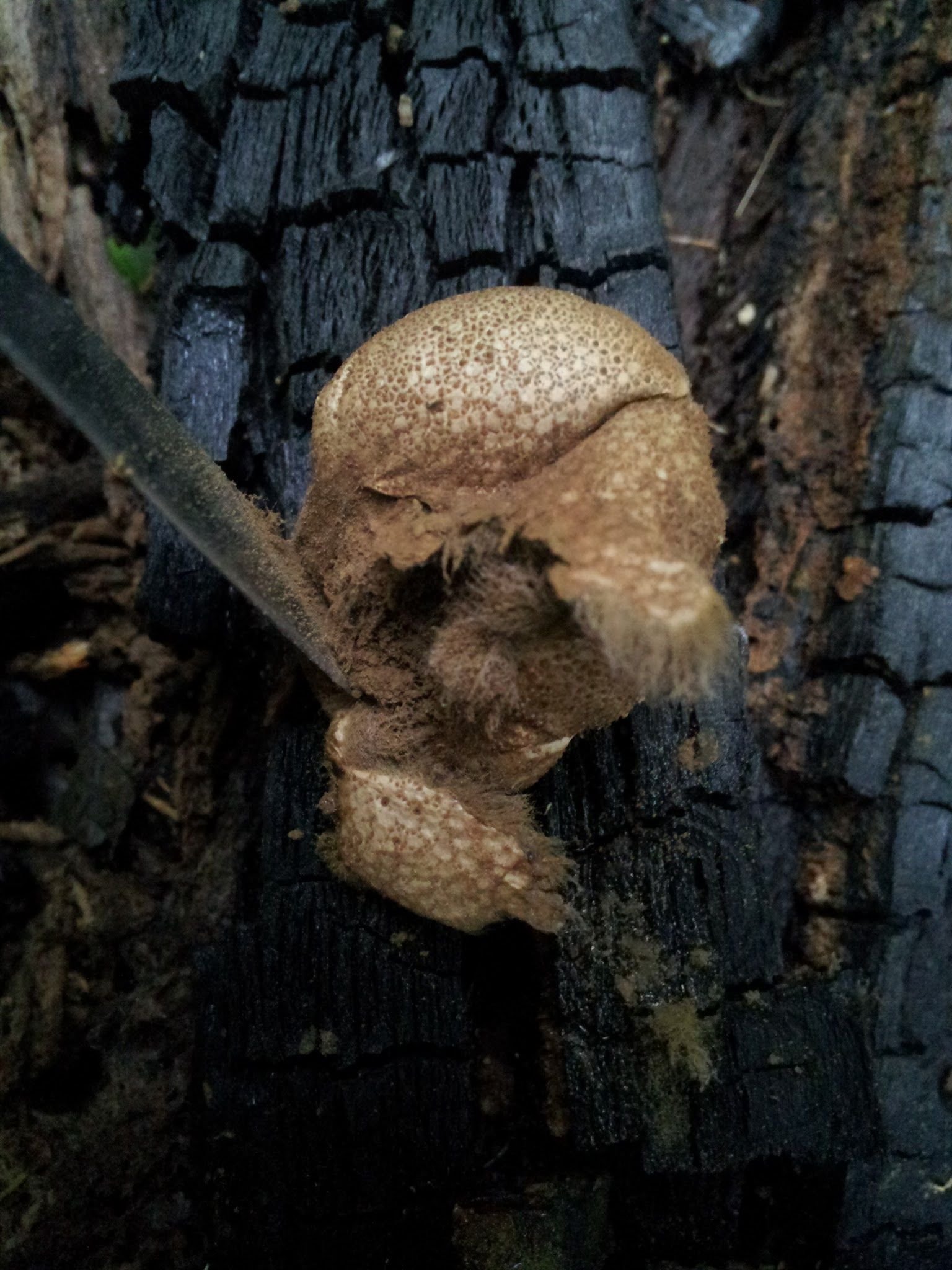
This is a spent puffball.
All of its flesh, the gleba, has converted into mature spores.
Some people are big fans of eating puffballs and consider them an easy first mushroom to identify for culinary purposes, as long as you get to them early.
However, the puffball is actually a dangerous mushroom to casually identify and eat, because of its passing resemblance to the egg form of several deadly poisonous Amanita mushrooms.
The sure way to distinguish between a genuine puffball and a young Amanita mushroom is to bifurcate the mushroom and look inside.
The inside of a puffball should be an undifferentiated white substance:
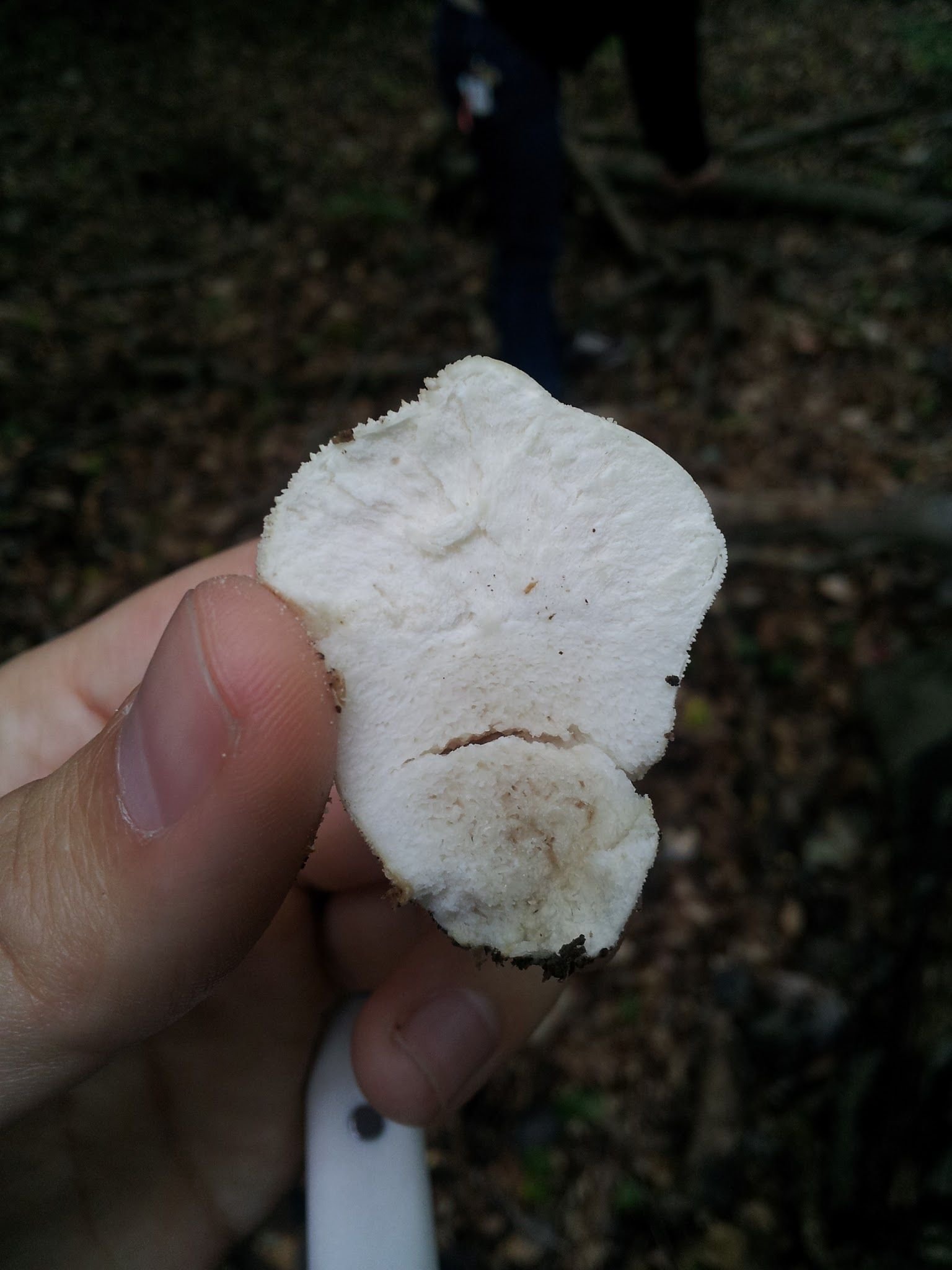
This one is browning a little on the bottom, but looking at the cross section you don't see any structures, just white flesh.
This, on the other hand, is a halved egg of a deadly Amanita species, Amanita phalloides, common in many parts of the world and North America.

It is not a splitting image of a puffball, but to a novice, in the dirt of a forest, it could be mistaken at first.
However, if you cut it in half, you can see the gill structures beginning to develop inside.
That is a the tell-tale sign that you are not dealing with a puffball!
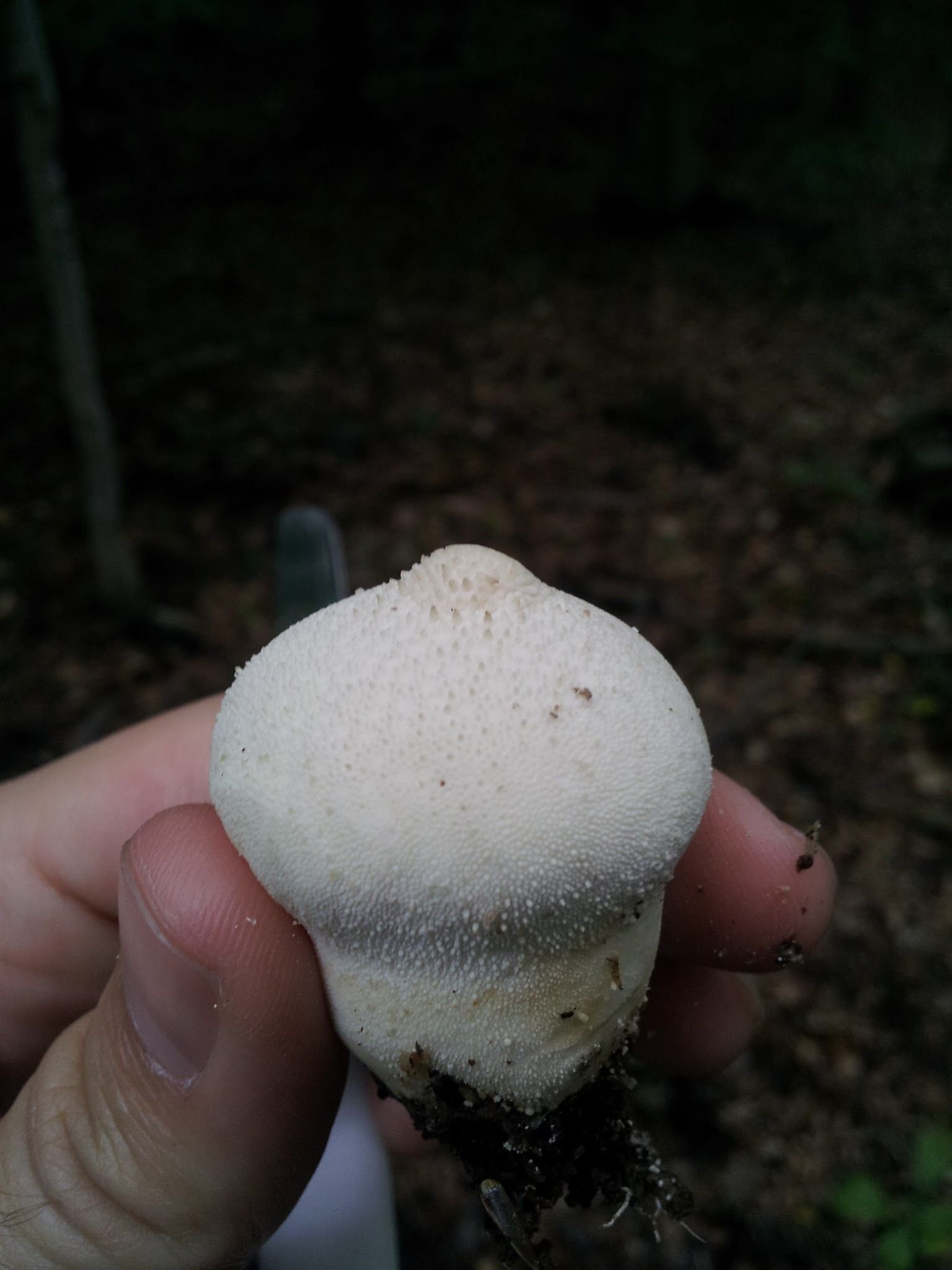
The Common Puffball, along with the Stinkhorn from last post, are great starting mushrooms for identification, because they are fairly common, pretty weird, and pretty easy to identify. Try to look for them next time you go for a walk in the woods!
Next time we will take a look at something a little more exotic.
Cap = N/A
Stem ("stipe") = N/A - The whole mushroom ranges from .6 to 2.4 inches wide by 1.2 to 2.8 inches tall (1.5 to 6 cm by 3 to 7 cm).
Spore Print = Dark Brown - Conventional spore print isn't possible, but as it ages, you can squeeze out the dark brown spores
Ecology ("What it grows on") = saprotrophic (meaning it survives off dead organic matter, usually bits of decayed wood in this case). On the ground or decayed wood.
Distribution = All over North America
Edibility = When fresh, firm and the flesh is pure, undifferentiated white. But repeat after me "we don't eat our finds."
Very dangerous lookalike in the Amanita button/egg. A cross-section necessary to confirm there are no immature gill structures present.
- Other Traits = Covered in delicate white spikes which leave a distinctive patterning on the mushrooms surface when rubbed off. Spore structure is the internal flesh of the mushroom, called gleba, which turns deep brown as the spores mature.
Should I change the name of this blog to "The Amateur Mycologyst?" Let me know your thoughts!
Image Souces:
Image One - Wiki Commons
Image Four - Wiki Commons
License for spore hole By Dan Molter [CC BY-SA 3.0 (http://creativecommons.org/licenses/by-sa/3.0)], via Wikimedia Commons
Spore Video - Posted By User Alan Esner on Youtube
Amanita Egg From Australian Government Resource
Informational Sources:
https://en.wikipedia.org/wiki/Lycoperdon_perlatum
Michael Kuo's Excellent Website Mushroomexpert.com
For A Crash Course On How To Identify A Mushroom Read The Amatuer Mycologist #3
For a Glossary Of Relevant Mycological Terms, Micheal Kuo's Website Provides
It's a firesale of all original, quality content, and I plan on delivering more every day!*
There's my pop-sci blog, soon to be dealing with the conundrum of light's speed.
Piqued #2 - A Crash Course In Space Time
Piqued #3 - A Crash Course Towards The Speed Of Light
Piqued #4 - Enter The Wormhole - A Crash Course
Then there's my series about the exploration of wild mushrooms - most recently an interactive workshop to teach readers how to identify mushrooms themselves
The Amatuer Mycologist #3
The Amatuer Mycologist#4 - Phallus ravenelii - Ravenelii's Stinkhorn

